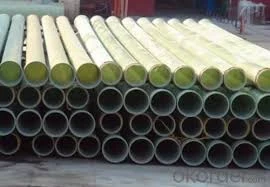
-
 Afrikaans
Afrikaans -
 Albanian
Albanian -
 Amharic
Amharic -
 Arabic
Arabic -
 Armenian
Armenian -
 Azerbaijani
Azerbaijani -
 Basque
Basque -
 Belarusian
Belarusian -
 Bengali
Bengali -
 Bosnian
Bosnian -
 Bulgarian
Bulgarian -
 Catalan
Catalan -
 Cebuano
Cebuano -
 China
China -
 China (Taiwan)
China (Taiwan) -
 Corsican
Corsican -
 Croatian
Croatian -
 Czech
Czech -
 Danish
Danish -
 Dutch
Dutch -
 English
English -
 Esperanto
Esperanto -
 Estonian
Estonian -
 Finnish
Finnish -
 French
French -
 Frisian
Frisian -
 Galician
Galician -
 Georgian
Georgian -
 German
German -
 Greek
Greek -
 Gujarati
Gujarati -
 Haitian Creole
Haitian Creole -
 hausa
hausa -
 hawaiian
hawaiian -
 Hebrew
Hebrew -
 Hindi
Hindi -
 Miao
Miao -
 Hungarian
Hungarian -
 Icelandic
Icelandic -
 igbo
igbo -
 Indonesian
Indonesian -
 irish
irish -
 Italian
Italian -
 Japanese
Japanese -
 Javanese
Javanese -
 Kannada
Kannada -
 kazakh
kazakh -
 Khmer
Khmer -
 Rwandese
Rwandese -
 Korean
Korean -
 Kurdish
Kurdish -
 Kyrgyz
Kyrgyz -
 Lao
Lao -
 Latin
Latin -
 Latvian
Latvian -
 Lithuanian
Lithuanian -
 Luxembourgish
Luxembourgish -
 Macedonian
Macedonian -
 Malgashi
Malgashi -
 Malay
Malay -
 Malayalam
Malayalam -
 Maltese
Maltese -
 Maori
Maori -
 Marathi
Marathi -
 Mongolian
Mongolian -
 Myanmar
Myanmar -
 Nepali
Nepali -
 Norwegian
Norwegian -
 Norwegian
Norwegian -
 Occitan
Occitan -
 Pashto
Pashto -
 Persian
Persian -
 Polish
Polish -
 Portuguese
Portuguese -
 Punjabi
Punjabi -
 Romanian
Romanian -
 Russian
Russian -
 Samoan
Samoan -
 Scottish Gaelic
Scottish Gaelic -
 Serbian
Serbian -
 Sesotho
Sesotho -
 Shona
Shona -
 Sindhi
Sindhi -
 Sinhala
Sinhala -
 Slovak
Slovak -
 Slovenian
Slovenian -
 Somali
Somali -
 Spanish
Spanish -
 Sundanese
Sundanese -
 Swahili
Swahili -
 Swedish
Swedish -
 Tagalog
Tagalog -
 Tajik
Tajik -
 Tamil
Tamil -
 Tatar
Tatar -
 Telugu
Telugu -
 Thai
Thai -
 Turkish
Turkish -
 Turkmen
Turkmen -
 Ukrainian
Ukrainian -
 Urdu
Urdu -
 Uighur
Uighur -
 Uzbek
Uzbek -
 Vietnamese
Vietnamese -
 Welsh
Welsh -
 Bantu
Bantu -
 Yiddish
Yiddish -
 Yoruba
Yoruba -
 Zulu
Zulu
GRP Insulation Tanks - Durable and Efficient Thermal Solutions
Understanding GRP Insulation Tanks A Comprehensive Overview
Glass Reinforced Plastic (GRP) insulation tanks have emerged as a vital component in various industries due to their durability, lightweight nature, and excellent insulation properties. These tanks are primarily utilized for the storage of liquids and are particularly popular in the chemical, oil and gas, and water treatment sectors. This article explores the features, benefits, and applications of GRP insulation tanks.
One of the defining characteristics of GRP insulation tanks is their composite structure. Made from a combination of fiberglass and resin, they offer superior strength compared to traditional materials such as metal or concrete. The fiberglass used in GRP tanks adds significant resistance to corrosion, which is crucial when storing hazardous chemicals or substances prone to deterioration. This corrosion resistance prolongs the lifespan of the tanks, reducing the need for frequent replacements or significant maintenance.
Understanding GRP Insulation Tanks A Comprehensive Overview
Insulation is a key aspect of GRP tanks, particularly for applications involving temperature-sensitive materials. The tanks can be manufactured with high-quality insulating materials that minimize heat transfer. This ensures that the stored liquids maintain their desired temperatures, which is essential in industries where thermal stability is critical to maintaining product integrity and safety.
grp insulation tank

GRP insulation tanks are also highly customizable. Manufacturers can tailor the size, shape, and insulation properties to meet specific client needs. This versatility makes them suitable for various applications, from large-scale industrial storage to smaller, specialized tanks used in laboratories. Furthermore, these tanks can be designed to meet stringent regulations and standards, ensuring compliance with industry requirements.
In addition to their practical features, GRP insulation tanks offer environmental benefits. Their longevity and durability contribute to reduced waste, as fewer tanks will need to be produced over time. Moreover, the energy efficiency provided by effective insulation can lead to lower energy consumption during heating or cooling processes, benefiting both the environment and operational costs.
The application of GRP insulation tanks extends beyond industrial uses. They are increasingly being used in residential and commercial settings for rainwater harvesting and wastewater treatment systems. Their ability to withstand various environmental conditions without degradation makes them a perfect choice for outdoor applications.
In conclusion, GRP insulation tanks represent a modern solution for a wide range of storage needs. Their durability, lightweight design, excellent insulation properties, and customizable nature make them an ideal choice for many industries. As technology advances and the demand for sustainable and efficient storage solutions grows, the popularity of GRP insulation tanks is likely to increase, paving the way for innovative applications and improved practices across various sectors.









